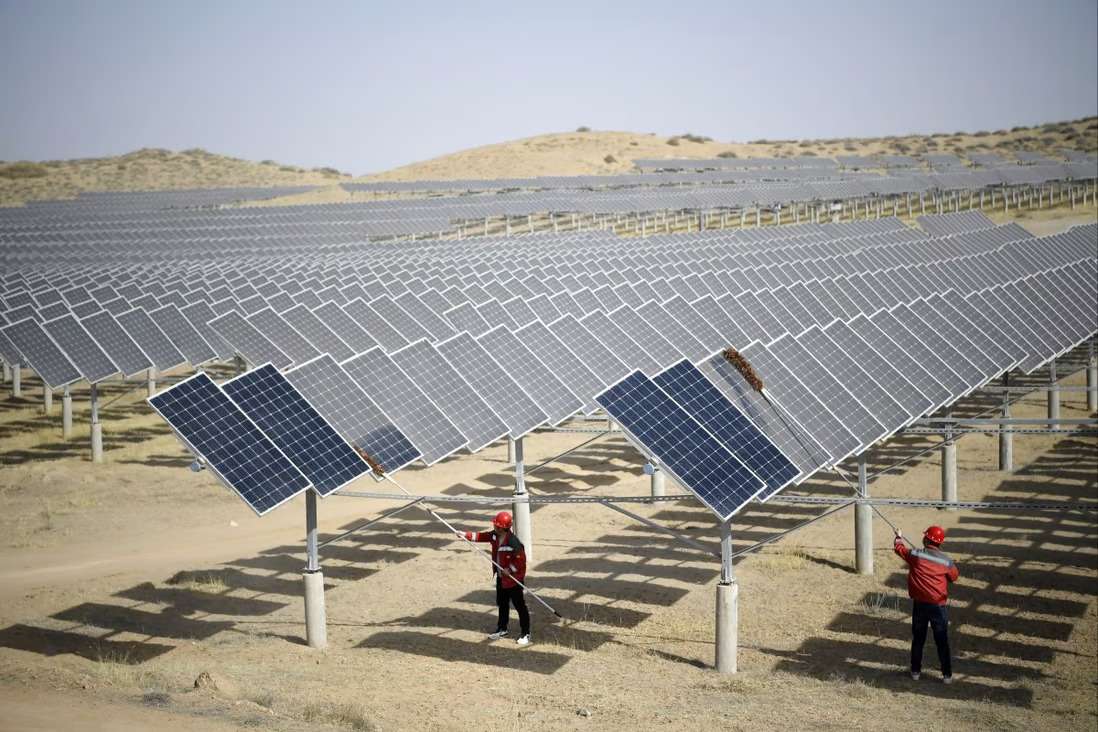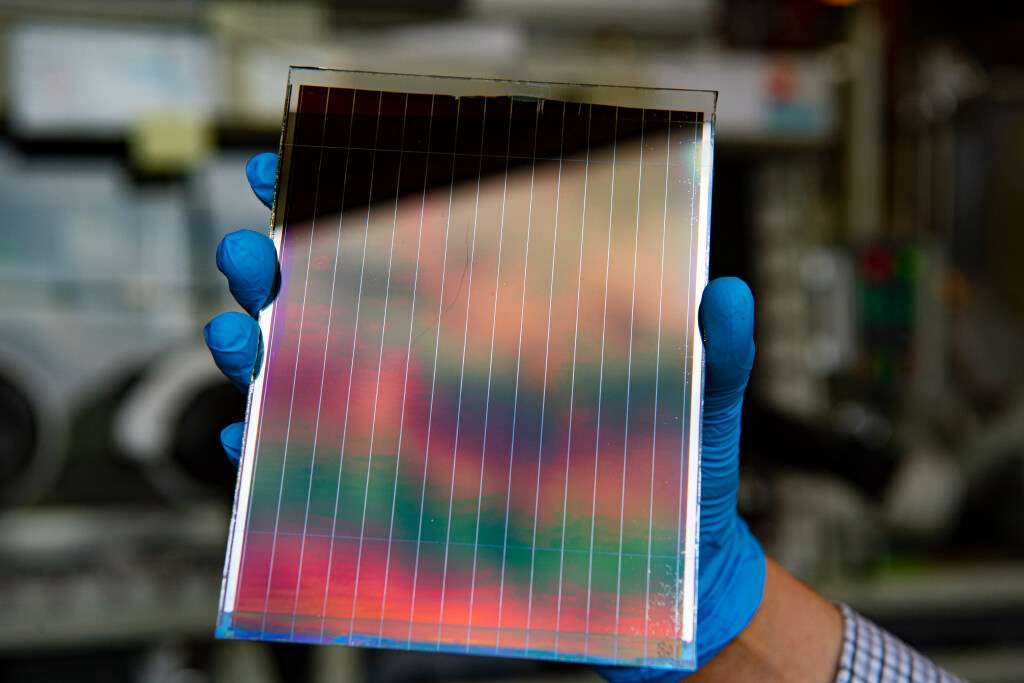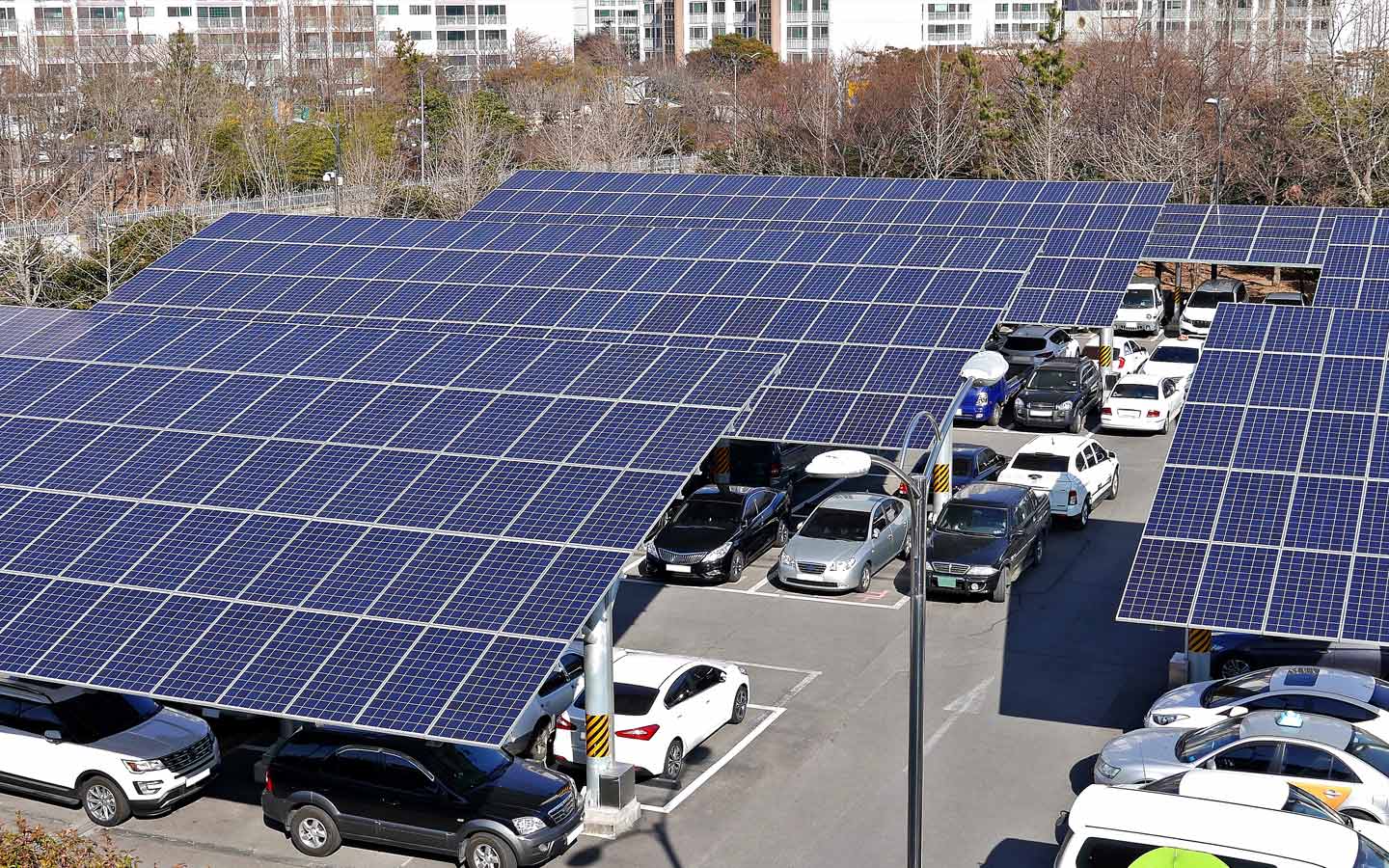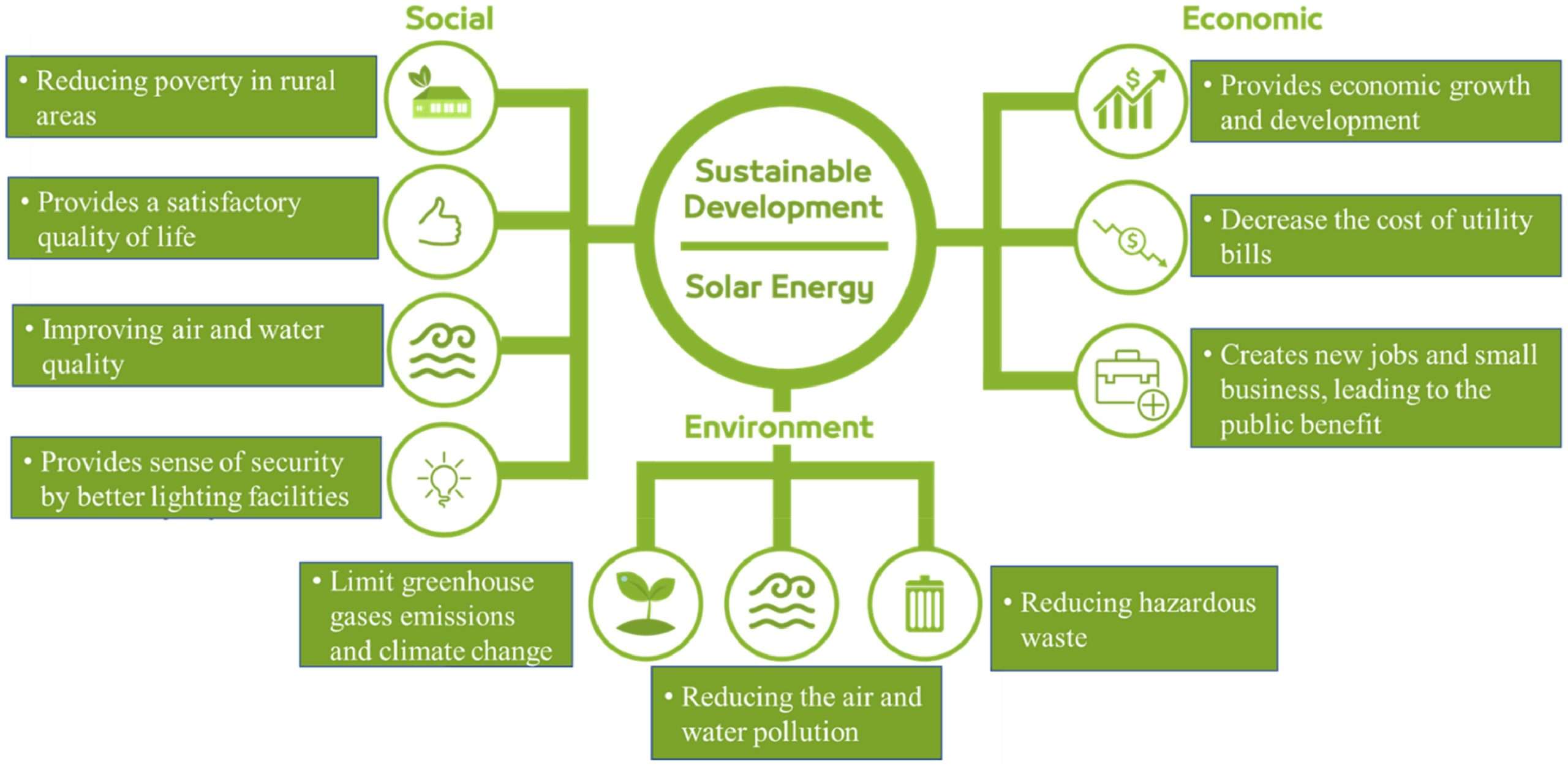Are advances in solar energy providing the answers we need as a planet? In view of the rising cost of non-renewable energy sources like oil, gas, and coal, heating bills have reached their highest levels in ten years. Economic and political conditions continue to limit energy sources, such as OPEC+ cutting oil production. The war in Ukraine caused the United States and other countries to ban oil imports from Russia. Despite these limiting factors, demand for energy is expected to grow, as it did in the U.S. in 2022, and energy costs for the average household may continue to increase.

Source: EPA Images
Equally, a clean energy revolution is underway globally. Solar energy, a renewable energy source, offers inexhaustible free energy for our planet. Moreso, manufacturing costs associated with solar technology are in an almost constant decline. Many nations have set ambitious goals for the deployment of solar power. They indicate that the use of solar energy will continue to increase significantly.
What are sustainable advances in solar energy?
Specifically, new technologies are currently being utilised to generate electricity from solar energy. Simply put, sustainable advances in solar energy refer to recent technological advancements and innovations in the field of solar energy. Globally, there has been growth in solar energy applications, as it can generate electricity, desalinate water and generate heat, etc. Conversely, as the price of solar technology continues to fall and the environmental benefits of solar energy become more widely recognised, it is likely that more and more individuals and businesses will turn to solar as a source of electricity.
From 2010 to 2018, the cost of generating electricity by solar PV plants decreased by 77%. However, solar PV installed capacity progress expanded 100-fold between 2005 and 2018. The installed capacity of solar energy worldwide has rapidly increased to meet energy demands. The installed capacity of PV technology from 2010 to 2020 increased from 40 334 to 709 674 MW.
Advances: the way Solar energy is used in Specific nations
The future of solar energy looks bright, with continued growth and innovation expected in the industry. The distribution of solar radiation and its intensity are two crucial factors that influence the efficiency of solar PV technology. Accordingly, these two parameters vary among different countries. Nations including the Middle East, Australia, North Africa, China, the USA, and Southern Africa, to name a few, have a lot of potential for solar energy technology.
To put it into context, China’s wind power capacity reached 280 GW in 2022 and its solar PV capacity is 300 GW. Its capacity, including onshore and offshore, has quadrupled since 2017. It is now almost comparable to the combined capacity of the other top 7 nations. Numerous causes, including governmental initiatives, technical developments, and rising demand for sustainable energy are to blame for this quick increase.

Source: Alamy
Similarly, the yearly increase in solar power in the EU has risen by 47% from 28.1 GW in 2021. In response to a heightened energy crisis and growing worries about energy security, the EU’s total solar power capacity increased by a massive 25% in only one year, from 167.5 GW to 208.9 GW in 2022. This year, 53.6 GW is expected to be added.
Progression: Advances in Solar energy
In addition to that, as of 31 March 2023, there are over 3.44 million solar PV installations in Australia. Each of these has a combined capacity of around 30.5 gigawatts. Again, many of the biggest solar farms in the world are located in the United Arab Emirates. This is thanks to the country’s plentiful sunlight and vast, vacant tracts of land. Again, the National Renewable Energy Laboratory (NREL) in the United States has estimated that the solar energy potential within the country is capable enough to provide 400 zettawatt-hours (Zwh) annually.

Source: Popular Mechanics
Why Is it essential that we focus on sustainable advances in solar energy?
Additionally, modern economies are driven by sustainable technologies. Solar energy is a clean and sustainable power source that could provide energy security and energy independence to all. Such a propensity is hugely important, not only for individuals, but also for the socio-economic prosperity of companies, societies, states, and nations.
Some Recent developments and Breakthroughs in Solar
Solar energy technology has progressed in leaps and bounds in just a few years. Recent sustainable advances include:
Solar Cell Efficiency
Conversely, solar panel efficiency is a measure of the amount of sunlight (irradiation) that falls on the surface of a solar panel, converting it into electricity. Due to the many advances in solar PV technology over recent years, the average panel conversion efficiency has increased from 15% to much more than 22%. This large jump in efficiency resulted in the power rating of a standard-size panel increasing from 250W to over 420W.
Perovskite Solar Cells
Significantly, solar cells made from perovskite crystals can be as much as 20% more efficient than solar cells made from silicon. The efficiency of perovskite solar cells to convert sunlight to electricity has increased dramatically over the years. Accordingly, a team at the US National Renewable Energy Laboratory (NREL) developed a new approach to manufacturing perovskite solar cells. It addressed previous problems and yielded devices with high efficiency and excellent stability.
Similarly, engineers from Princeton University recently published an article in Science that introduced the first perovskite solar cell with a commercially viable lifetime. These are all significant steps toward perovskite photovoltaics becoming a standard component in solar installations worldwide.

Source: NREL
Solar Power At Night
During the day, solar radiation significantly warms the planet. In general, however, energy is lost to the atmosphere and the cold surrounding space. Significantly, in new research published in the journal ACS Photonics, a team of photovoltaics engineers at UNSW Sydney, Australia, demonstrated a successful test run of their new device, capable of converting this thermal energy into electricity.
Solar Windows
Presently, in a solar window, a transparent coating or material gathers some of the energy from the light passing through the window, and building materials, and stores it as electricity. Unlike solar panels, it allows some of the light spectrum — visible light — to pass through, while collecting energy from the infrared and ultraviolet light we cannot see.
Ubiquitous Energy, one of the companies developing solar windows, uses a special glass coating applied during the normal manufacturing process of windows to capture ultraviolet and infrared light energy.

Source: UBIQUITOUS ENERGY
Printable Solar Cells
These paper-thin solar cells may now be created by inkjet printing on paper. This will enable solar cells to be substantially cheaper and installed in practically any place. Conversely, this includes walls, windows, roller blinds, shade umbrellas, and even tents. Recently, scientists from Swansea University in Wales have developed the world’s first ‘completely printable‘ perovskite solar cells using an innovative process.
Solar-Powered Cars
Solar-powered cars are another technological advancement in solar energy. A solar cell at UC Berkeley converts solar energy directly into electricity, powering a car’s motor. Other solar-powered cars include the Sunswift solar race car and the solar car of Abu Dhabi. Solar cars can be ideal for promoting green transportation, as there aren’t any harmful emissions.

Source: Dubizzle.
Solar-powered IoT systems
In an era where environmental consciousness and energy efficiency are paramount, the integration of solar-powered Internet of Things (IoT) devices for energy monitoring has emerged as a groundbreaking solution. Subsequently, these innovative devices provide a chance to monitor and optimise energy use in real-time, due to the accelerating improvements in IoT technology and the rising need for sustainable practices.
sustainable Development Goals (SDGs) and how they are linked to sustainable advances in solar energy
Specifically, advances in solar energy are highly relevant to achieving the Sustainable Development Goals. Solar energy offers environmental, social, and economic benefits that can accelerate our progress toward the SDGs. This type of renewable energy contributes to the reduction of poverty and access to affordable and reliable electricity.
Solar energy provides education, health, clean water, and sanitation while minimising the carbon footprint and greenhouse gas emissions that protect society from infections and diseases. Subsequently, the solar industry creates jobs, reduces hunger, and increases access to food and shelter. Increasing employment opportunities due to advances in solar energy creates a more equitable human civilisation, which reduces the corruption rate and strengthens the community.

Source: International Journal of Thermofluids
A Thrivable Framework
THRIVE Framework examines issues and evaluates potential solutions in relation to the overall goal of thrivability. Significantly, it is about making predictive analyses using modern technology that supports environmental and social sustainability transformations, for which it utilises the ciambella chart.
Given the advancements in solar technology, it appears that solar energy will become a vital part of our daily lives in the future. Interestingly, solar energy links with other technologies to mitigate sectors with complex decarbonisation challenges, such as transport, building, agriculture, and manufacturing, among others. This continued deployment of solar energy in various industries will support the global energy transition.
For more information about solar PV, how transparent solar windows turn to solar panels, and several additional resources on clean energy please visit our website. Follow our informative, diverse blog and podcast series and learn about our regular live webinars featuring expert guests in the sustainability field, including many rich discussions on renewable advances. Sign up for our newsletter for regular updates.























